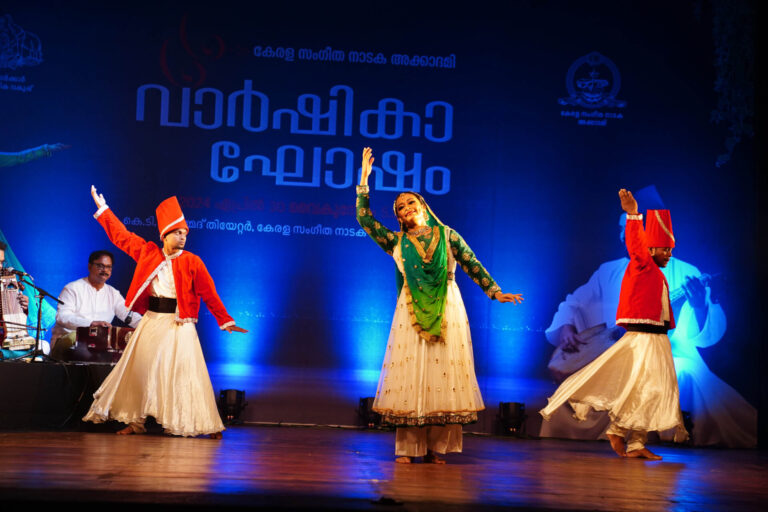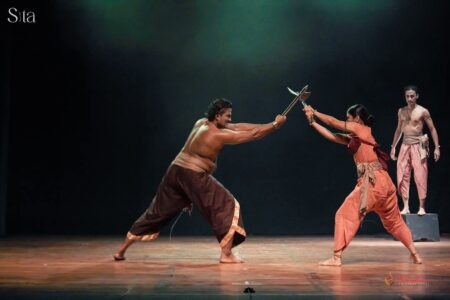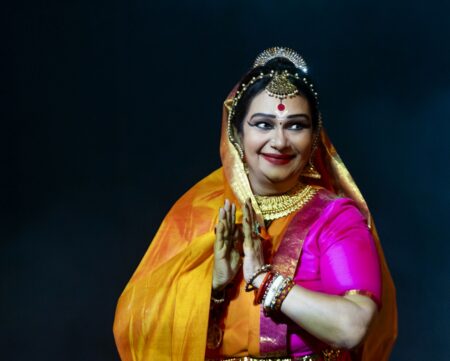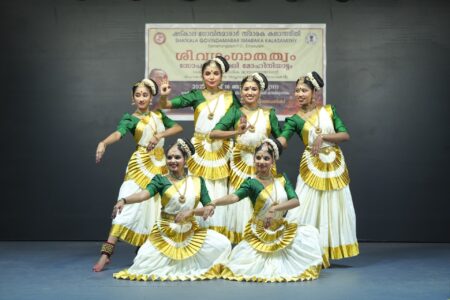The recent Sufi Kathak performance at the Kerala Sangeetha Nataka Akademi featured elegant footwork, emotive abhinaya, and rhythmic tabla accompaniment.
The 66th annual celebrations of Kerala Sangeetha Nataka Akademi turned eventful with the presentation of Sufi Kathak, very rarely staged dance form in Kerala. While the Sufi music was rendered by Ustad Ashraf Hydroz, the dance was performed by the noted danseuse Sohini Karanth.
The 90 -minute show began with the traditional vandana (salutation) of the Gods in two parts. The team sprang a surprise first by invoking Siva, the Nataraj thereby highlighting the secular outlook of the art form.
The verses for this part were culled from Siva Yajur Mantra beginning with Karpur Gauram Karunavataram. The mantra explained “Pure White like Camphor, an Incarnation of Compassion, The Essence of Worldly Existence, Whose Garland is the King of Serpents, Always Dwelling inside the Lotus of the Heart. I Bow to Shiva and Shakti Together”.
Composed in rag Bairagi Bhairav, the dancer interpreted the lines with typical Kathak techniques. The poses of Siva demonstrated by Sohini were awesome.
Blending Kathak techniques with Sufi mysticism
The next Vandana was based on the composition of Amir Khusrau, the Sufi poet, father of Quawwali. Incidentally, all the compositions in the performance were ascribed to him. Kaul, excerpted from Quaran, enjoined the faithful to pay respects not only to Allah but also to Ali. It is essentially a meditation which aspect is highlighted by two male dancers attired in a special costume who keep revolving in unison with their hands up, behind the dancer.

Anupallavi was composed in tarana whose origin is also attributed to Amir Khusrau. Mnemonic syllables and bols were executed by the dancer to this part. The rag Misra Bhoop was enchanting.
Mohay apnay hi rung mein rung lay was the next composition in which the dancer entreats to the Almighty, her love, “to Dye me in your hue, my love”. She reaches the Almighty through her Guru who appears symbolically and showers flowers on her. Captivating was the entry of the Guru attired in white costume towards the end of this piece. She experiences the presence of the Almighty and feels blessed. The number was composed in Desh raag.
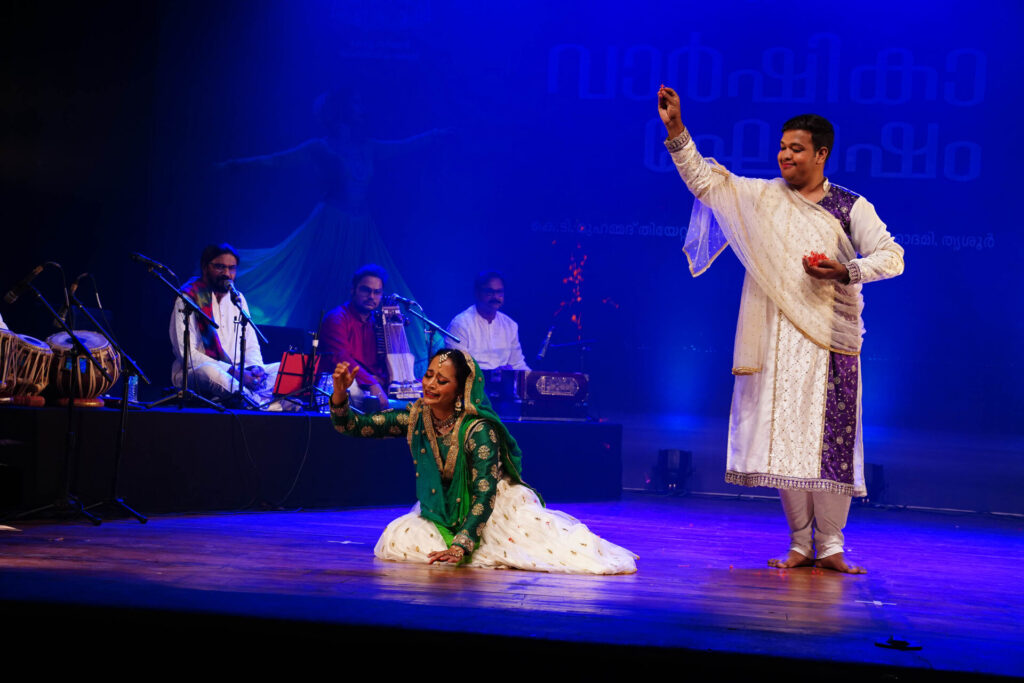
Sohini thereafter demonstrated the essential techniques of Kathak dance including the footwork, movements of the torso, and expressions of abhinaya. Enchanting was the dialogue between tabla and her footwork. As for the rhythms, she interpreted them in three tempos. Chakkar, a demarcating feat of Kathak, was done twenty times without break that elicited applause from the audience.
Intricate movements
Chhap tilak sab cheeni ray mosay naina milaikay was the next number rendered in Misra Yaman. This beautiful and sensual love poem is written in the traditional Indian style, with a strong emphasis on the physical and emotional aspects of love. The nayika is deeply in love with her partner. She says, “You’ve taken away my looks, my identity, by just a glance”. The love is so intense that she wants to marry him. Interestingly, the nayika here is Amir Kusarau himself and the lover, the Guru Hazrat Nizamuddin Aulia. In this number also the two male dancers who keep revolving, reappeared emphasizing the spirit of meditation. The performance concluded with a traditional tarana in rag Darbari.
Though the language of the poems embraced Urudu, Parsi, Hindi and Brajbhasha, explanation by Ashraf together with the dance helped communicate the themes of each one. The essence of each composition was peace, love and harmony, the contemporary relevance of which need not be emphasised.

Outstanding was the performance of the accompaniment artistes who included Kislay Anand (Padang, nattuvavaran), Kabeer Abdul Rahiman (harmonium), Sarfaraz (sarangi) and Sumit Naik (Tabla).
A native of Kochi, Ashraf belongs to the Rampur Sahaswan Gharana and is a disciple of Ustad Faiyaz Khan. He holds MA and M Phil in music from Delhi University and a winner of many awards including Guru Puja from Kerala Sangeetha Nataka Akademi.
As for Sohini, she was introduced to Kathak byGuru Nivedita Bhattacharya in Lucknow and lated honed her skills under Guru Nirupama Rajendra and T D Rajendra in Bengaluru’s Abhinava Dance Company.

